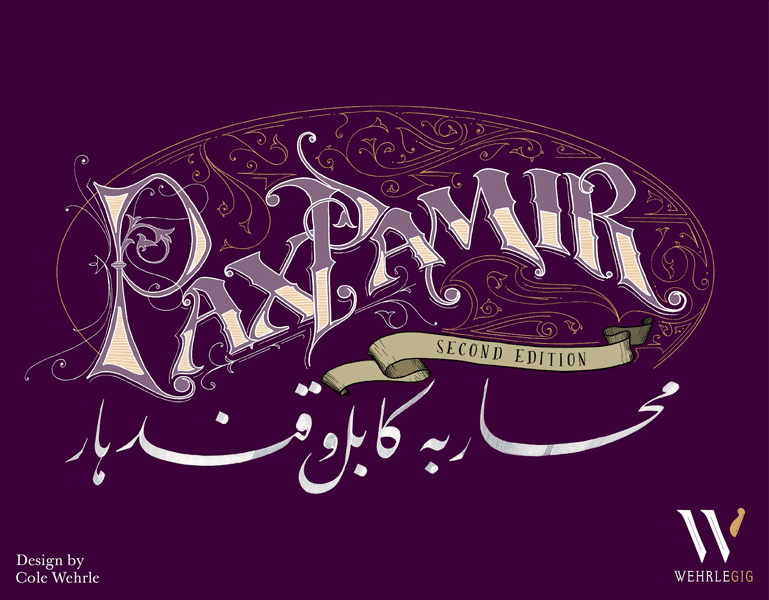Pax Pamir: Second Edition (2019) Board Game
Pax Pamir: Second Edition is a board game designed by Cole Wehrle, known for his intricate and strategic game designs. Published in 2019 by Wehrlegig Games, this game is set in the 19th century in Afghanistan and Central Asia during the Great Game era. Players take on the roles of powerful Afghan tribal leaders, seeking to manipulate and control the political landscape to their advantage.
Game Components of Pax Pamir: Second Edition
How To Setup Pax Pamir: Second Edition
Setting up the game involves laying out the cloth map, distributing the wooden player pieces and tokens, and shuffling the extensive deck of cards. Each player chooses a coalition to align with—either Russia, Britain, or the Afghan faction—at the beginning of the game. The market deck is prepared, and players start with a basic hand of cards. The setup is relatively straightforward, but the complexity of the game mechanics becomes apparent as play progresses.
Gameplay Mechanics and Game Objective
Player Experience
Playing *Pax Pamir: Second Edition* is an immersive experience that combines historical depth with intricate gameplay mechanics. Players navigate the complex web of alliances, betrayals, and resource management, all set against the backdrop of 19th-century Central Asia. The game demands strategic thinking and decisiveness, as players must adapt quickly to changing circumstances and the actions of other players. The dynamic nature of the game, especially with higher player counts, introduces a high level of negotiation and conflict, making each game unique and engaging.
Pros
Cons
Personal Thoughts on Pax Pamir: Second Edition
*Pax Pamir: Second Edition* is a game for experienced board game enthusiasts who appreciate complex, strategic gameplay and historical themes. It is ideal for players who enjoy negotiating, forming alliances, and managing resources in a dynamic environment. While it may not appeal to those seeking a lighter, more casual gaming experience, it offers a deeply engaging and intellectually stimulating adventure for those willing to dive into its intricate mechanics. This game is particularly suited for groups of 3-4 players, where the balance between negotiation and conflict is most pronounced.
We are supported by our audience. When you purchase through links on our site, we may earn an affiliate commission, at no extra cost for you. Learn more.

